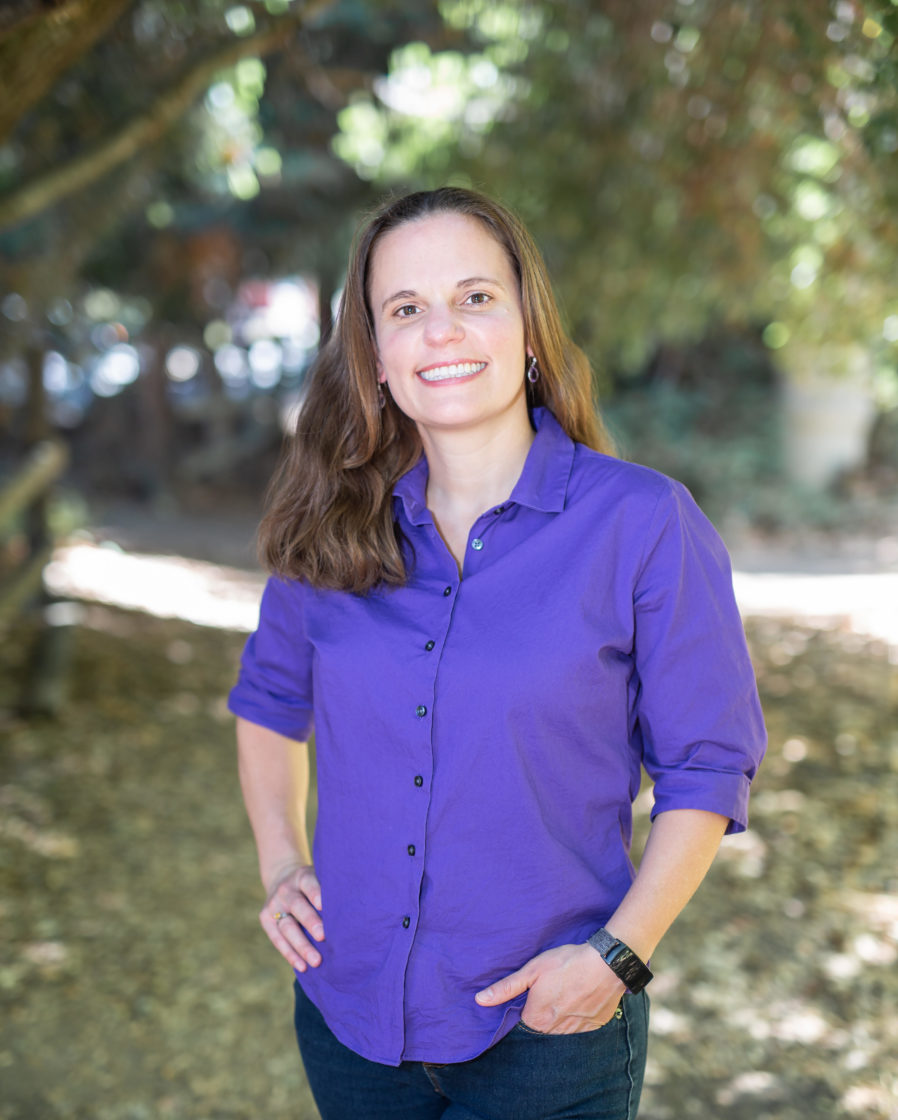
This year’s Users’ Executive Committee chair first used synchrotrons as a grad student and loved the experience so much she eventually became a beamline scientist at SSRL. She’s excited to work closely with the user community during the ALS Upgrade and is well versed in post-beamtime food options in Berkeley.
What motivated you to join the UEC?
I became a UEC member because I was really interested in the ALS Upgrade. Early in my career, I got to see the whole process of NSLS (National Synchrotron Light Source) upgrading to NSLS-II. The planning, seeing it be built, and then turning the light on—it was really neat. So, I was interested in being involved during the ALS Upgrade. It’s a tumultuous time for a synchrotron, and you have to set priorities between the science you want to do now and the science you want to do in 10 years. It’s a good time to be part of the UEC. You can have the most impact, because the upgrade is changing the relationship of ALS with its users.
The ALS has a particularly strong, vibrant UEC, and it feels like you matter—it’s not just because you’re required to have a UEC. We’ll be communicating more closely and more frequently as the upgrade progresses, and we’ll host more town halls.
How did you decide to become a beamline scientist?
I really enjoyed the environment the synchrotrons provide. There’s students, postdocs, really experienced scientists, and experienced engineers all working together to solve a common problem. There’s not this hierarchy that you get in the university settings. I was attracted to that collaborative problem solving that a synchrotron provides.
My very first experiment was at the ALS, so ALS definitely has a special place in my heart. I was a grad student in Chris Jacobsen’s group at Stony Brook doing coherent diffractive imaging. We worked on 9.0.1, which doesn’t exist anymore. I commuted from New York to Berkeley a few weeks at a time about every two months. The time was really intense. It requires a significant amount of preparation that you don’t get when you’re working in the lab—when you know you can come back tomorrow and try something different. With beamtime, this is the week that we have, so let’s make the most of it. It makes you a really good scientist.
The ALS has the friendliest staff, and they’re always so happy on the experimental floor. It didn’t matter what question I had as a student or what time of day it was, there was always someone available to help.
I did a postdoc at SSRL (Stanford Synchrotron Radiation Lightsource), and once you get a taste of California, it’s hard not to want to live here. I thought I wanted to teach, and during my postdoc, I realized I didn’t want people having to take over my data. That’s when I realized, “Okay, I do actually want to stay.”
What is a memorable beamtime experience you’ve had?
You really get to know somebody if you spend eight hours with them on a graveyard shift, so you really bond with the other scientists that you work with. I also have fond memories of walking down the hill when the sun was rising and having this debate in my head—I should get some sleep because in eight hours I’ve got to be back. But you pass all these lovely restaurants that are opening up with coffee and croissants and you think, “I could eat, or I should go to bed.” Of course, you always have the beautiful view as you walk down and you’re exhausted, but this is the first time you’ve been outside for 16 hours as well. So, it’s kind of nice.
How do you work on inclusion, diversity, equity, and accountability (IDEA)?
At SSRL, I have my own research group, which I try to keep diverse. I think one of the benefits of having students and postdocs is that I get to show them that women can be PIs as well. Both men and women benefit from this reminder.
I like that Berkeley has the IDEA Committee, and it sets the groundwork. I thought it was great that, at a UEC meeting, we talked about students working nights on the beamlines by themselves, and discussed how accessible that is if people don’t feel safe. It’s important to keep an eye out for issues coming from the users that are specific to diversity.
What do you like to do in your free time?
Right now, it’s schooling children! I like to play video games. I am an avid Zelda player, and I occasionally play Animal Crossing. I run twice a week, so some people might consider me a runner. I’ve done a lot more reading this year—a bunch of apocalyptic stories, but usually I read fantasy.